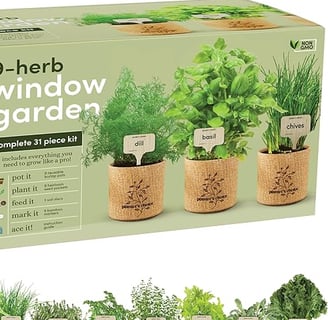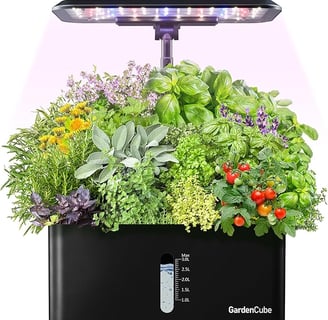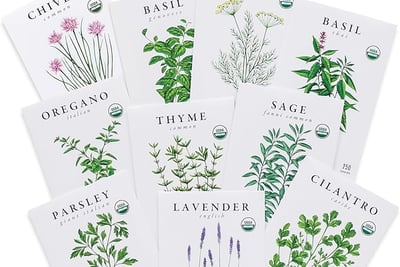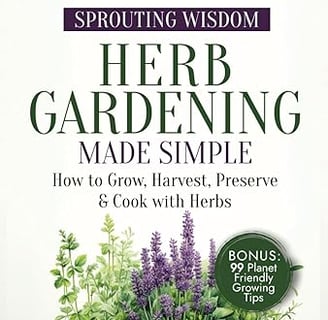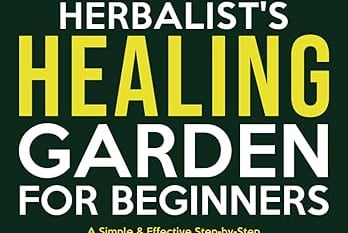Elevate Your Culinary Skills: The Easiest Herb Garden for Home Cooks
8 min read


Introduction to Herb Gardening
Herb gardening has emerged as a popular trend among home cooks, offering a range of benefits that can significantly enhance the culinary experience. Growing herbs at home allows individuals to add fresh flavors to their dishes, elevating the overall taste without the need for artificial additives or excess salt. The convenience of having fresh herbs readily available at arm's reach encourages cooking creativity, making the preparation of meals not only enjoyable but also healthful.
Herbs such as basil, parsley, and rosemary not only enhance the flavor profile of meals but also contribute to an aesthetic appeal. The vibrant colors and aromatic scents of these plants can transform the ambiance of a kitchen, making cooking a more inspiring activity. Furthermore, cultivating an herb garden promotes self-sufficiency and sustainability, allowing cooks to grow their own ingredients instead of relying on store-bought options that may lack freshness.
The rise in home gardening can be attributed to a growing awareness of the benefits of nutrition, sustainable living, and the joys of home-cooked meals. Many individuals are seeking ways to reconnect with nature and foster a sense of accomplishment through gardening. It is becoming increasingly common for people to explore gardening not just as a hobby, but as a means of enriching their culinary skills. This shift has prompted a surge in interest around herb gardens, which can be conveniently grown in backyards, kitchens, or even on balconies.
In this blog post, we will delve deeper into the specifics of creating an herb garden, exploring the types of herbs suitable for beginners, essential tips for successful growth, and ways in which fresh herbs can enhance the flavor of various dishes. For home cooks who are keen to take their culinary skills to the next level, starting an herb garden presents an excellent opportunity to do so.
Choosing the Right Location for Your Herb Garden
When embarking on the journey of cultivating an herb garden, selecting the right location is a paramount consideration that can significantly influence the growth and yield of your plants. One of the most critical factors to assess is sunlight exposure. Most herbs thrive in full sun, necessitating at least six to eight hours of direct sunlight each day. Therefore, positioning your garden in a south-facing spot is often ideal. If you are considering an indoor herb garden, placing pots on windowsills that receive ample sunlight will be beneficial. Alternatively, consider utilizing grow lights to supplement light for herbs that require more sunlight.
Accessibility is another essential aspect when choosing the location for your herb garden. A garden situated close to your kitchen makes harvesting convenient, allowing you to incorporate fresh flavors into your dishes readily. If you opt for an outdoor herb garden, a location near the kitchen entrance can enhance your culinary experience. For an indoor setting, a kitchen counter or a small shelf could serve as an ideal spot for your pots, granting you easy access to your herbs while cooking.
Furthermore, it is crucial to consider environmental factors such as temperature, wind exposure, and protection from pests. Most herbs prefer moderate temperatures and can be sensitive to extreme weather conditions. If you live in a windy area, placing your herb garden in a sheltered spot can help protect your plants from damage. For indoor gardens, maintaining humidity levels can also be beneficial, particularly for herbs that originate from tropical climates.
In summary, selecting the right location for your herb garden involves evaluating sunlight exposure, accessibility, and environmental conditions. By carefully considering these factors, you can ensure a thriving and productive herb garden that enhances your culinary endeavors.
Essential Herbs for Beginners
Starting a home herb garden can be a rewarding experience for novice gardeners, particularly when selecting the right herbs to cultivate. Certain varieties are ideal for beginners due to their resilience, minimal maintenance, and versatility in culinary applications. Four of the most recommended herbs for those just starting out are basil, parsley, cilantro, and mint.
Basil is a staple in many kitchens, renowned for its aromatic qualities and vibrant flavor. This herb thrives in warm weather and requires plenty of sunlight, making it perfect for outdoor gardens or sunny kitchen windowsills. Basil works brilliantly in an array of dishes, from classic pesto to Mediterranean salads, adding a fresh taste that elevates any meal.
Another highly beneficial herb is parsley, which is not only easy to grow but also packed with nutrients. Parsley comes in two main varieties: flat-leaf and curly, both of which can be used in numerous culinary applications. It serves as a garnish but also enhances the flavors of soups, salads, and sauces, making it an invaluable addition to various recipes.
Cilantro, also known as coriander, is a slightly more challenging herb but still accessible for green thumbs in training. It grows rapidly, enabling frequent harvests. This herb is indispensable in a multitude of cuisines, particularly in Latin and Asian dishes, where it provides a distinctive and vibrant taste that can brighten any plate.
Finally, mint is a refreshing herb that can be grown in pots or garden beds, quickly spreading if not contained. Its invigorating flavor is perfect for beverages such as teas and cocktails, and it can enhance desserts and salads alike. These four herbs—basil, parsley, cilantro, and mint—represent an excellent foundation for any beginner's herb garden, combining ease of growth with versatile culinary applications. Engaging with these herbs will not only improve your cooking but also encourage a love for gardening.
Growing Herbs: Soil, Water, and Care Tips
Successfully growing herbs requires attention to several critical factors, including soil, watering methods, and general care strategies. The foundation of a flourishing herb garden begins with selecting the right soil. Herbs thrive in well-drained, nutrient-rich soil. A mix of potting soil combined with perlite or sand can enhance drainage, ensuring excess water does not accumulate around the roots. This approach is especially crucial for container gardening, where proper drainage is vital to prevent root rot. Regularly checking the pH of your soil can also support optimal growth, as many herbs prefer a slightly acidic to neutral pH range of 6.0 to 7.0.
Watering is another essential aspect of herb care. Typically, herbs require consistent moisture without being overly saturated. Watering deeply yet infrequently is preferable, encouraging roots to grow deeper and making plants more resilient. A general guideline is to water when the top inch of soil feels dry to the touch. During hotter months, more frequent watering may be necessary, whereas, in cooler seasons, you may need to reduce the frequency. Implementing a drip irrigation system can also alleviate concerns about overwatering and allow for consistent moisture levels, especially in larger herb gardens.
Aside from soil and watering, several general care strategies contribute to the productivity of an herb garden. Regularly pruning herbs not only promotes bushier growth but helps deter pests. Consider utilizing organic pest control methods, such as introducing beneficial insects or using neem oil. Lastly, provide your herbs with adequate sunlight, ideally six to eight hours per day, to enhance growth and flavor. By focusing on these essential components—soil quality, watering techniques, and proper care—home cooks can cultivate a vibrant and productive herb garden, ensuring fresh and flavorful additions to their culinary creations.
Harvesting and Storing Your Herbs
Harvesting herbs at the right time is crucial for maximizing their flavor and ensuring a bountiful supply for your culinary endeavors. The ideal time to harvest most herbs is in the morning after the dew has evaporated but before the sun has fully risen. This prevents the loss of essential oils that contribute to the herb's aroma and taste. For many herbs, such as basil and mint, it's best to harvest just before they flower, as this is when their flavor is at its peak. Gently pinching or snipping the leaves with clean scissors can help preserve the plant's health while allowing you to obtain the desired quantity.
When trimming herbs, it is recommended to cut the stems just above a leaf node, which promotes new growth and keeps the plant bushy. A general rule of thumb is to never harvest more than one-third of the plant at a time to ensure sustainability. For larger quantities, consider a rotational harvesting approach, allowing different sections of the plant to rejuvenate while still providing a continuous supply of fresh herbs.
Once harvested, proper storage of your herbs is essential to maintain their quality. For short-term use, fresh herbs can be stored in the refrigerator wrapped in a damp paper towel and placed inside a plastic bag. This keeps them hydrated while preventing wilting. Alternatively, for long-term storage, herbs can be dried or frozen. To dry herbs, simply tie them in small bunches and hang them upside down in a dark, well-ventilated area. Once fully dried, store them in airtight containers away from light. Freezing herbs, on the other hand, can be achieved by chopping them and placing them in ice cube trays filled with water or oil. This method captures the fresh flavor for use in cooking throughout the year.
Using fresh versus dried herbs can significantly impact your dishes. Fresh herbs provide more vibrant flavors and are best added towards the end of cooking to preserve their natural oils. Dried herbs, while more concentrated, should be used sparingly and added earlier in the cooking process to allow their flavors to develop fully. Understanding these techniques for harvesting and storing your herbs will enable home cooks to elevate their culinary skills and enjoy the full spectrum of flavors that their herb garden has to offer.
Incorporating Fresh Herbs into Your Cooking
Fresh herbs bring a vibrant explosion of flavor and aroma to various dishes, enhancing the culinary experience significantly. Their versatility makes them a staple in kitchens worldwide, allowing home cooks to elevate their meals effortlessly. To start incorporating fresh herbs into your daily cooking, consider the flavor profiles of the herbs you choose. Some popular examples include basil, parsley, cilantro, and thyme, each offering unique taste characteristics.
One effective approach is to use fresh herbs in marinades. Combining herbs such as rosemary, oregano, and garlic with olive oil creates a fragrant marinade for meats, fish, and vegetables. This not only infuses the dishes with flavor but also tenderizes them, resulting in a more enjoyable eating experience. An alternative is to incorporate fresh herbs into salad dressings—whisking together herbs like chives or dill with vinegar and oil can create a refreshing dressing that enhances the taste of assorted greens.
For those looking to brighten up their soups or stews, adding fresh herbs during the last moments of cooking—such as parsley or cilantro—adds depth and freshness. Alternatively, consider using fresh herbs as a finishing garnish; a sprinkle of chopped basil on a pasta dish or a few sprigs of mint atop a fruit salad adds not only flavor but also visual appeal. Additionally, fresh herbs can be blended into dips like pesto or chimichurri, further integrating their unique flavors into your meals.
Experimentation is key when it comes to using fresh herbs in cooking. Feel free to mix and match flavors to discover what works best for your palate. By utilizing fresh herbs creatively, home cooks can transform everyday dishes into extraordinary meals, demonstrating that enhancing flavor can be both easy and fulfilling.
Common Challenges and Solutions in Herb Gardening
Herb gardening can be a rewarding endeavor, yet beginners often face various challenges that can hinder their journey toward success. One common issue is pest infestation. Herbs are appealing to a variety of pests such as aphids, spider mites, and whiteflies. To address this problem, it is crucial to monitor plants regularly for signs of invasion. When detected early, insects can often be removed manually. Alternatively, a gentle spray of water can dislodge them, while organic insecticidal soaps can provide effective treatment if necessary.
Another challenge faced by novice herb gardeners is disease, which can manifest as yellowing leaves, wilting, or stunted growth. Fungal infections, such as powdery mildew or root rot, often thrive in overly humid environments or with improper watering techniques. To mitigate these issues, ensure proper air circulation around plants and avoid excessive moisture by watering herbs early in the day to allow foliage to dry. Choosing disease-resistant varieties can also minimize the likelihood of encountering these problems.
Environmental factors can significantly impact herb growth as well. Temperature fluctuations or insufficient sunlight can stunt development and vitality. Many herbs thrive in full sun, ideally receiving at least six hours of sunlight daily. If your gardening area lacks adequate sunlight, consider relocating your herb garden to a more suitable spot or using grow lights to supplement natural light. Additionally, temperature extremes can be detrimental; therefore, providing some shade during especially hot days and protecting plants from frost can foster a more conducive growing environment.
By recognizing these common challenges and applying practical solutions, budding herb gardeners can effectively create and maintain a thriving herb garden, utilizing various techniques to troubleshoot issues as they arise, ensuring healthy growth and robust flavor in their culinary endeavors.

